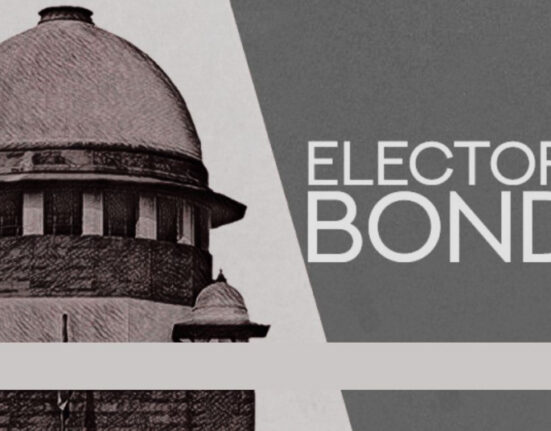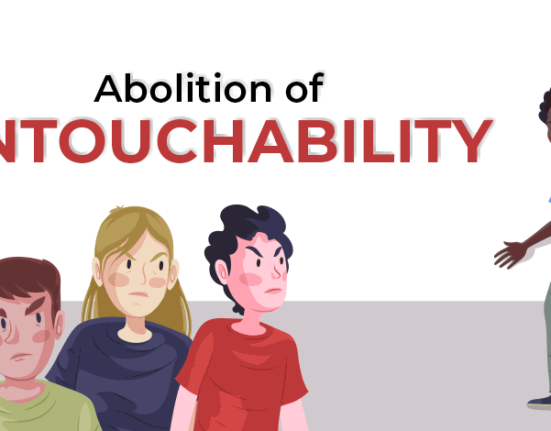Shatakshi Aggarawal, a 2nd-year, VIPS (Delhi) student has written this article on ” The Doctrine of Eclipse and Doctrine of Severability”.
DOCTRINE OF ECLIPSE
Meaning
The Doctrine of Eclipse is applied to a Pre- Constitutional law and Post- Constitutional law (i.e. law enacted before 26 January 1950) which was valid when it was enacted but when the Constitution came into force a shadow falls upon it because it is inconsistent with Part III of the Constitution. The Act is therefore eclipsed. When the shadow is removed by an amendment of the Constitution the pre-constitutional law becomes fully applicable and is free from infirmity.
The Supreme Court decision in Bhikaji Narain Dhakras v. State of M.P[1]is a good illustration of the application of the rule as in this case an existing State law authorized the State Government to exclude all private motor transport operators from the field of transport business. Parts of this law became void at the commencement of the Constitution. It infringed the provisions of Article 19(1)(g) of the Constitution and could not be justified under the provisions of clause (6) of Article 19. In 1951, clause (6) of Article 19 was amended by the Constitution (1st Amendment) Act, 1951. It was done to permit the government to monopolize any business. The Supreme Court held that after the amendment of clause (6) of Article 19 the constitutional impediment was removed. The impugned Act ceased to be unconstitutional and became operative and enforceable.
Application of Doctrine of Eclipse in India
In Indian Constitution Article 13 deals with the concept of the Doctrine of Eclipse. Article 13(1) applies to pre-Constitutional laws, and Article 13(2) applies to post-constitutional laws.
Article 13(1) states that all the laws in force in the territory of India immediately before the commencement of the Constitution which are inconsistent with fundamental rights present in Part III of the Constitution will be void. While Article 13(2) states that the State cannot make any law that takes away or abridges the fundamental rights conferred by Part III of the Constitution. Also that any law made in contravention of this clause will be void.[2]
Keshav Madan Menon v. State of Bombay[3]
It was the first case where traces of the origin of this doctrine can be found. In this case, the petitioner, in 1949 published a pamphlet titled ‘Railway Mazdooron ke khilaaf nai Zazish’. It was said to violate section 15 (1) and section 18 (1) of the Indian Press (Emergency Powers) Act, 1931 while the constitution came into force on 26th January 1950. Accordingly, a petition was filed in the High Court on 7th March 1950 praying that sections 15(1) and 18(1) of the Indian Press (Emergency Act), 1931 be declared void in light of Articles 13 and 19(1) (a) of the Constitution. While the petition was pending charges were framed against the petitioner by the Chief Presidency Magistrate under section 18 of the Indian Press (Emergency Powers) Act 1931.
The High Court held that the proceedings under Indian Press (Emergency Act), 1931 were not affected. Even if the Act were inconsistent with the fundamental rights conferred by the Constitution. The Court dismissed the petitioner’s application therefore, the petitioner appealed the matter before the Supreme court.
The Observation of The Supreme Court
The Supreme Court held that because at the time when the pamphlet was published, fundamental rights of the Indian Constitution did not exist. Thus, the appellant could not claim to have them. The court was of the view that if it were against the Constitution’s spirit to continue proceedings under such a void law, then it would also be against the spirit of the Constitution that other men who were convicted under the said law before the Constitution came into force continue to rot in jail. Article 13(1) did not make the existing laws inconsistent with the fundamental rights void ab initio or for all purposes. On the contrary, it provided that all existing laws, in so far as they are inconsistent with the fundamental rights, shall be void to the extent of their inconsistency.
It should be noted that in Article13 “law” includes any ordinance, order, by-law, rule, regulation, notification, custom, or usage having in the territory of India, but clause (4) of Article 13 states that nothing in this Article shall apply to any amendment of this Constitution made under Article 368. This implies that if any constitutional amendment law gets passed that takes away certain fundamental rights or is in violation of them. Those laws, although inconsistent with the rights, are not void.[4]
Whether the Doctrine of Eclipse applies to Post-Constitutional laws or not?
The doctrine of eclipse applies to only pre-constitutional laws i.e. laws enacted before the adoption of the constitution of India. This view was also reiterated in the case of-
Deep Chand v. State of Uttar Pradesh.[5]
In this case, it was held that a post-Constitution law is void from its inception. Also that a pre-Constitution law having been validly enacted would continue in force so far as non-citizens are concerned after the Constitution came into force. The Court said that there is no distinction in the meaning of the word ‘void’ in Articles 13(1) and 13(2). It connoted the same concept but, since its inception the post-Constitution law is void, it cannot be resuscitated without re-enactment. Therefore, a line of distinction was made between clause(1) and clause(2) of Article 13. As a pre-constitutional law continues to exist except to the extent of inconsistencies with rights given by Part III of the Indian Constitution. No post-constitutional laws in contravention of Part III can be made and the same if made is void ab initio.
State of Gujarat v. Shri Ambica Mills Ltd.[6]
In this case, the court held that even the pre-existing laws apply to non-citizens. Even though the laws are held void as it violates the fundamental rights of the citizens of India. The pre-existing laws are operative concerning non-citizens. The doctrine of the eclipse is applicable only in the case of pre-existing laws but not post-constitutional laws.
Any law will be void only to the extent of inconsistency but will remain applicable to inchoate rights and liabilities. Moreover, it only stays dormant in the case of citizens. Article 13(1) and 13(2) differentiates between the post and pre-constitutional laws. They highlight the need for distinction between citizens and non-citizens. With the advent of the constitution, special rights were given to the citizens. It renders them protection against any unconstitutional post-constitution laws.
DOCTRINE OF SEVERABILITY
Meaning
This Doctrine means that if the offending provision of an act is contrary to a fundamental right or is unconstitutional. Then it is severable from the rest of the Act. Only the offending provision would be declared void and not the whole Act. It applies to legislation that is partly ultra vires- that is beyond the legislative competence of the legislature. The courts have emphasized that in determining whether the valid parts of an Act can be separated from the Invalid parts the determining factor is the intention of the legislature.
If after the invalid portion is expunged from the statute what remains cannot be enforced without making alterations and modifications to it then the whole of it must be struck down. In determining the legislative intent on the question of separability. It will be legitimate to take into account the history of the legislation, its object, title, and the preamble to it.
Application of Doctrine of Severability in India
Article 13 does not make an entire Act inoperative. It makes only such provisions of it as are inconsistent with or violative of fundamental rights. The rule that the invalidity is only to the extent of inconsistency is not peculiar to Article 13 but is a general principle of statutory interpretation.[7]
In the State of Bombay v. F.N. Balsara[8] eight sections of the Bombay Prohibition Act, 1949 were held ultra vires on the ground on the ground that they infringed the fundamental rights of the citizens. But the Act, minus the invalid provisions, was allowed to stand. The court said, “The decision declaring some of the provisions of the Act to be invalid does not affect the validity of the Act as it remains”. This is, however, subject to one exception. If the valid portion is so closely mixed up with the invalid portion that it cannot be separated without leaving an incomplete or more or less mingled remainder. Then the courts will hold the entire act ‘void’. The primary test is whether what remains is so inextricably mixed with the part declared invalid that what remains cannot survive independently.
Rules related to the doctrine of severability
The Court applied the Doctrine of Severability in R.M.D Chamarbaugwalla v. Union of India[9] and laid down various rules regarding the said doctrine:
- In determining whether the valid parts of the statute are separable from the invalid parts. The intention of the Legislature is the determining factor. The test to be applied is whether the Legislature would have enacted the valid part if it had known that the rest of the statute was invalid.
- If the valid and invalid provisions are so indistinguishably mixed up that they cannot be separated from one another. Then, the invalidity of a portion must result in the invalidity of the Act in its entirety. On the other hand, if they are so distinct and separate that after striking out what is invalid, what remains is in itself a complete code independent of the rest. Then it will be upheld notwithstanding that the rest has become unenforceable.
- Even when the valid provisions are distinct and separate from those which are invalid. If they all form parts of a single scheme that is intended to be operative as a whole. Then also the invalidity of a part will fail in the whole.
Other Rules
- Likewise, when the valid and invalid parts of a statute are independent and do not form part of a scheme but what is left after omitting the invalid portion is so thin and truncated as to be in substance different from what it was when it emerged out of the legislature. Then also it will be rejected in its entirety.
- The reparability of the valid and invalid provision of a statute does not depend on whether the law is enacted in the same section or different sections. It is not the form, but the substance of the matter that is material, and that has to be ascertained on an examination of the Act as a whole and of the setting of the relevant provision therein.
- If after the invalid portion is expunged from the statute what remains cannot be enforced without making alterations and modifications. Then the whole of it must be struck down as void, as otherwise, it will amount to judicial legislation.
- In determining the legislative intent on the question of severability. It will be legitimate to take into account the history of legislation, its object, title, and the preamble to it.
What is the difference between the doctrine of eclipse and severability?
The key difference between the doctrine of eclipse and severability is that the latter can be applied to post-constitutional laws. Severability is a separate concept altogether. It makes the conflicting provisions void ab initio keeping the rest of the act applicable and operable.
Conclusion
Article 13 expressly lays down what otherwise would have been implied i.e. the supremacy of the fundamental rights over any other law in case of inconsistency between the two.[10] Therefore, the fundamental rights are paramount, and Article 13 which has in itself the doctrine of severability and the doctrine of eclipse protects the dormancy of the fundamental rights.
It may, however, be noted that all these tests are working formulas for the guidance of the State and the courts. They are not fixed legal propositions. The scope and application of fundamental rights cannot be made dependent on them forever and in all cases.
Also Read: The Making of the Indian Constitution. Click Here!
[1] AIR 1955 SC 781
[3] AIR 1951 SC 128
[4] Indian Constitution
[5] AIR 1959 SC 648
[6] AIR 1974 SC 1300
[7] V.N. Shukla, Constitution of India 40 (Abhinandan Malik)
[8] AIR 1951 SC 318
[9] AIR 1957 SC 628
[10] V.N. Shukla, Constitution of India 40 (Abhinandan Malik)
![]()







Leave feedback about this